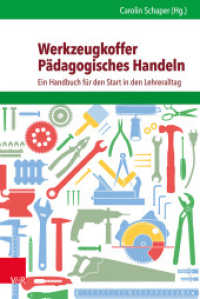- ホーム
- > 洋書
- > ドイツ書
- > Mathematics, Sciences & Technology
- > Technology
Full Description
Industrial pollutants include dioxins and furans that are also reviewed in the chapter by Mudhoo et al. The chapter on fly ash by Gianoncelli et al. The chapter on antifouling paints used for ship protection, by Sousa et al., highlights the occurrence of toxic organotins in human organs such as heart, liver and breast milk.








